Underneath a rose’s outward beauty and grace is a durable and hardy core. They withstand winter conditions across growing zones and climate conditions. But even the hardiest roses need winter protection in areas with frigid temperatures and high winds.
Cold hardiness relative to your site depends on the rose species and variety, your USDA growing zone, and the local microclimate. Some types may not be reliably hardy, especially near the lowest end of their growing range.
With extra insulation, roses overwinter successfully and set new growth and buds in spring’s warming temperatures. The long-lived, low-maintenance, reliable growers will reward the extra effort with years of beauty.
Winterizing Basics
Hybrid teas, floribundas, and grandifloras are most susceptible to damage from low temperatures and rapid changes. Most old garden roses, shrub, species, and landscape roses are exceptionally winter-hardy. Some miniatures, polyanthas, and climbers boast good chill thresholds, too.
Extra winter protection defends against freezing and thawing fluctuations, which damage tissues. The aim of winterizing is to maintain a uniform cold state, especially at the lower branch, crown, and root zones.
Many modern hybrids are grafted, where breeders fuse the upper growth of one variety with the rootstock of another for hardiness, disease resistance, and other selected traits. The graft union, where the upper growth meets the base, is sensitive to frigid conditions. If the union is cold-damaged, the upper growth suffers. Generally, grafted roses need winter protection.
Own-root selections are less vulnerable. These specimens grow from cuttings with their original roots. Those that die back in winter may recover if the roots are healthy.
In warmer zones (7 and higher), extra mulch is usually sufficient for overwintering. Topdress with two to three inches of mulch (bark, compost, clean straw, chopped leaves, evergreen boughs) for insulation. Colder climate growers, like northern zones and high elevations, need more winterizing, depending on the selection.
To prepare roses for overwintering:
- Water through frost as the shrubs prepare for winter dormancy
- Prune any diseased, declining, or dead canes and any long, whippy stems
- Wait until a few hard frosts and allow several days of below-freezing temps for leaf dieback and dormancy
- Remove fallen leaves, flowers, and other debris to limit fungal disease spread and overwintering
- Gradually remove winter protection with warming temperatures (March/April) as new growth emerges
Roses in Zones 1-6
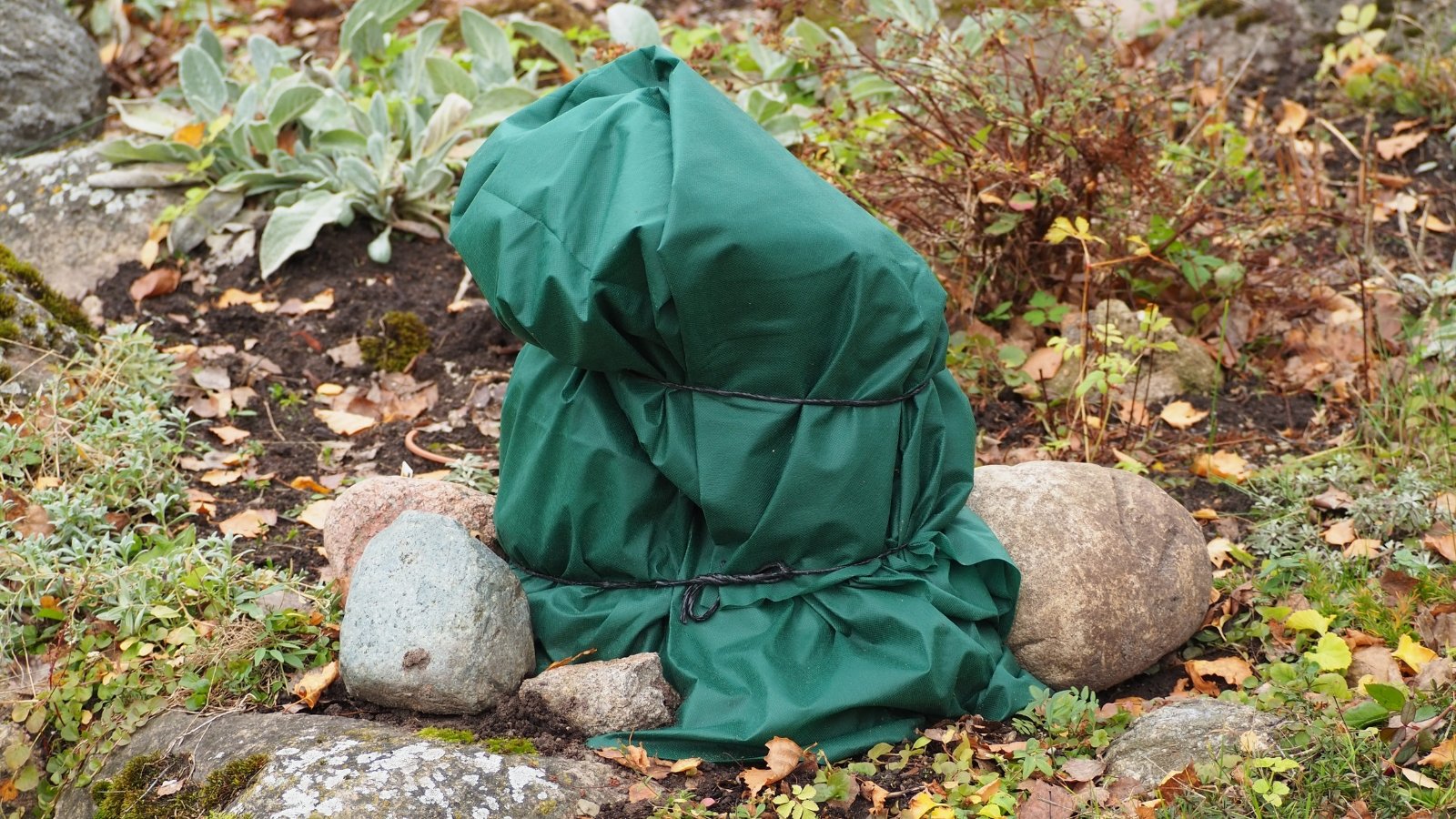
Roses in USDA zones 1 through 6 need from added protection for the best chance of surviving winter and thriving post-season. For extra safety, let’s add borderline portions of zone 7.
Selections that perennialize in your zone (and lower) are the best options; even then, they need extra protection. There are several ways to streamline winterizing based on your growing situation.
Modes of Winter Protection
For roses with a shrubby habit like hybrid teas, floribundas, grandifloras, English, and groundcovers, several options make suitable insulators.
Protect the roots and crown with 8 to 12 inches of mulch at the shrub’s base, covering the lower stems and roots. Hilling material includes soil, compost, and shredded leaves.
Employ chicken wire or similar pliable open wire fencing to form a cylindrical enclosure around the bush. Fill the frame with leaves, which insulate canes, crowns, and roots throughout the season. Collars, a pre-fab insulating form, are convenient to purchase for an easy cover. Skip the similar-sounding “cones,” which limit air circulation.
Tie the canes loosely with twine or cloth strips and wrap the bundle with burlap or frost cloth. Cover the base and roots with a mound.
A more intensive method for severe winters. Tie canes together. Loosen the soil around the roots and dig on one side to create a shallow trench. Tip the entire root ball and canes into the trench and cover with six inches of soil.
Hybrid Tea
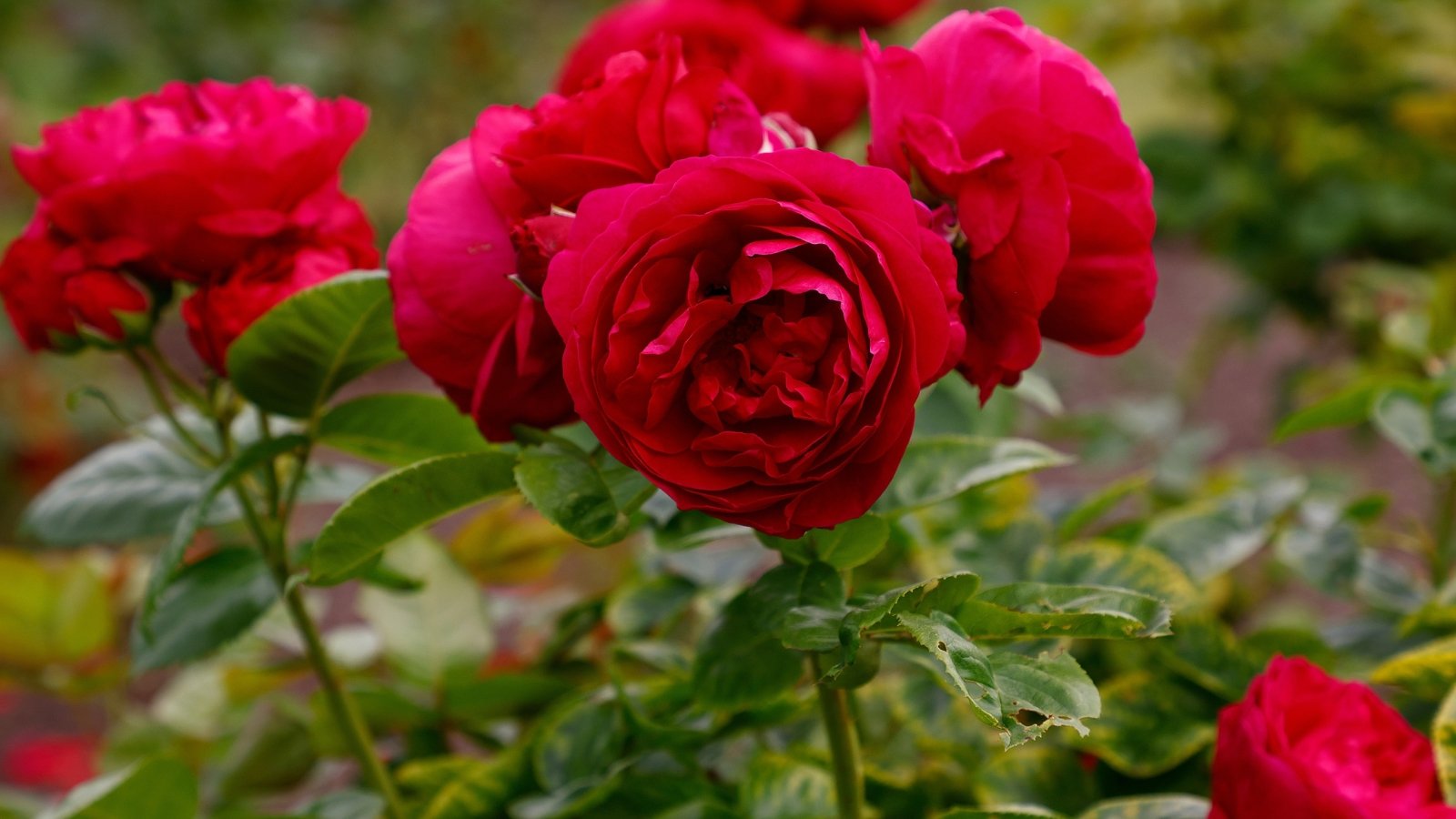
Hybrid teas, especially grafted specimens, may face cold damage in their lower growing zones of 5 and 6. These roses need winter protection in freezing zones.
Hybrid teas have lineage in adaptable old garden selections, particularly hybrid perpetuals, leading to their florist-worthy pointed buds and stylized blooms. Old garden roses, the foundation for modern roses, appeared before 1867 when the first hybrid teas came into circulation and surpassed the antique selections in popularity.
Hybrid teas are known for their upright growth and long, straight stems with singular blooms. Their large, showy flowers are hallmarks in floristry and cutting gardens.
Some gardeners in northern climates cut back their hybrid teas before winterizing. Knee-high, about 18 to 24 inches, preserves the core of the canes and crown.
Floribunda
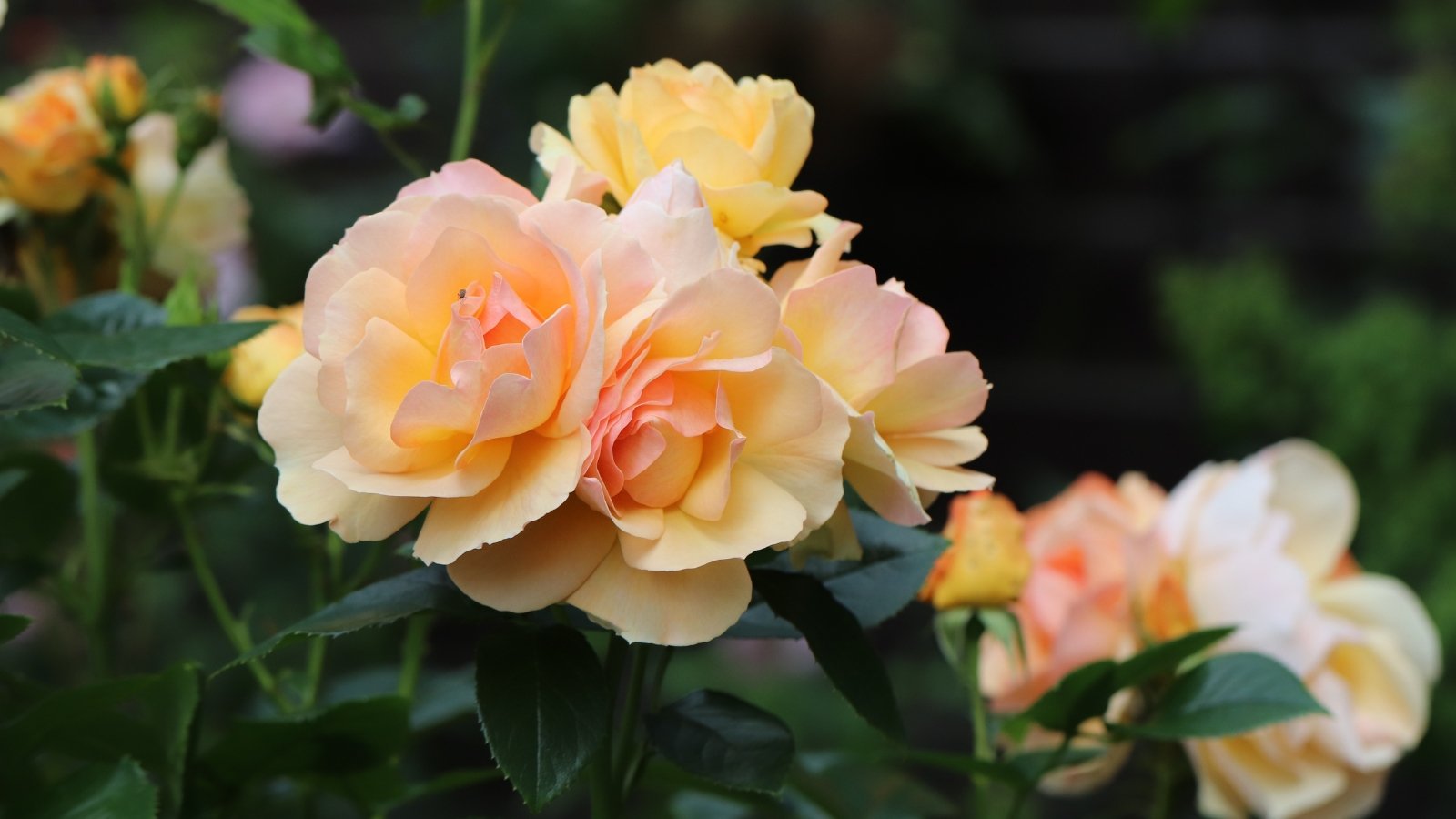
Floribunda arose from crossing a hybrid tea with a polyantha. Polyanthas are rugged and vigorous growers with clusters of small, high-centered blooms on upright forms. They repeat-flower throughout the season for an extended show of color.
Their continual blooming, easy care, and good disease resistance add to florabunda’s appeal. Hardiness, too, is a feature of these gold standards, growing in zones 4 through 9, though they’re often grafted and need winterizing.
Grandiflora
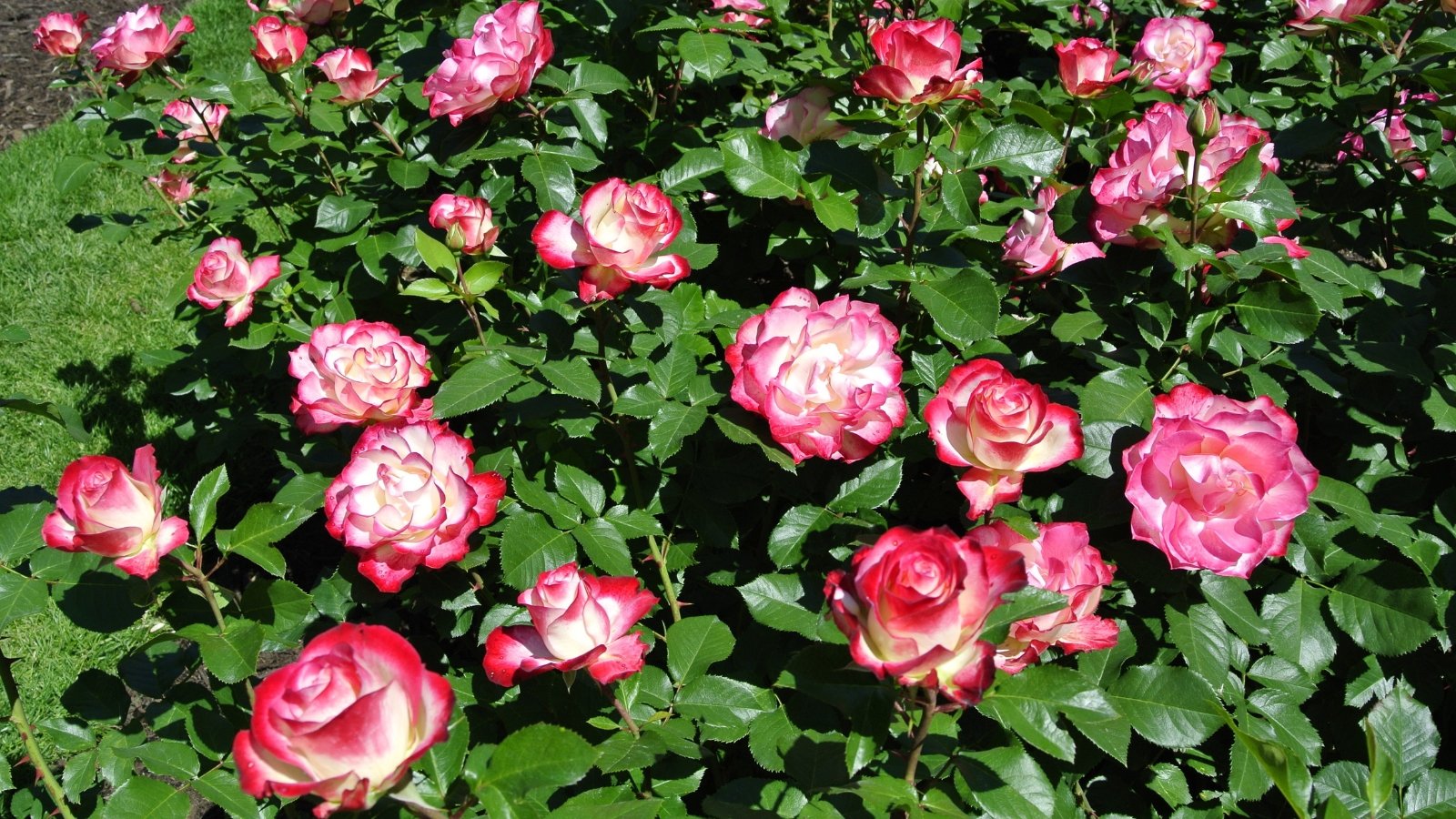
Grandiflora represents the best of floribunda and hybrid tea. Flowers have high points on long, slender stems.
Grandiflora repeat-blooms with singular flowers or clusters. It bears good heat and cold tolerance in zones 4 through 9 but faces the same freezing weather challenges as hybrid teas and floribundas.
Miniature, Polyantha, and Groundcover
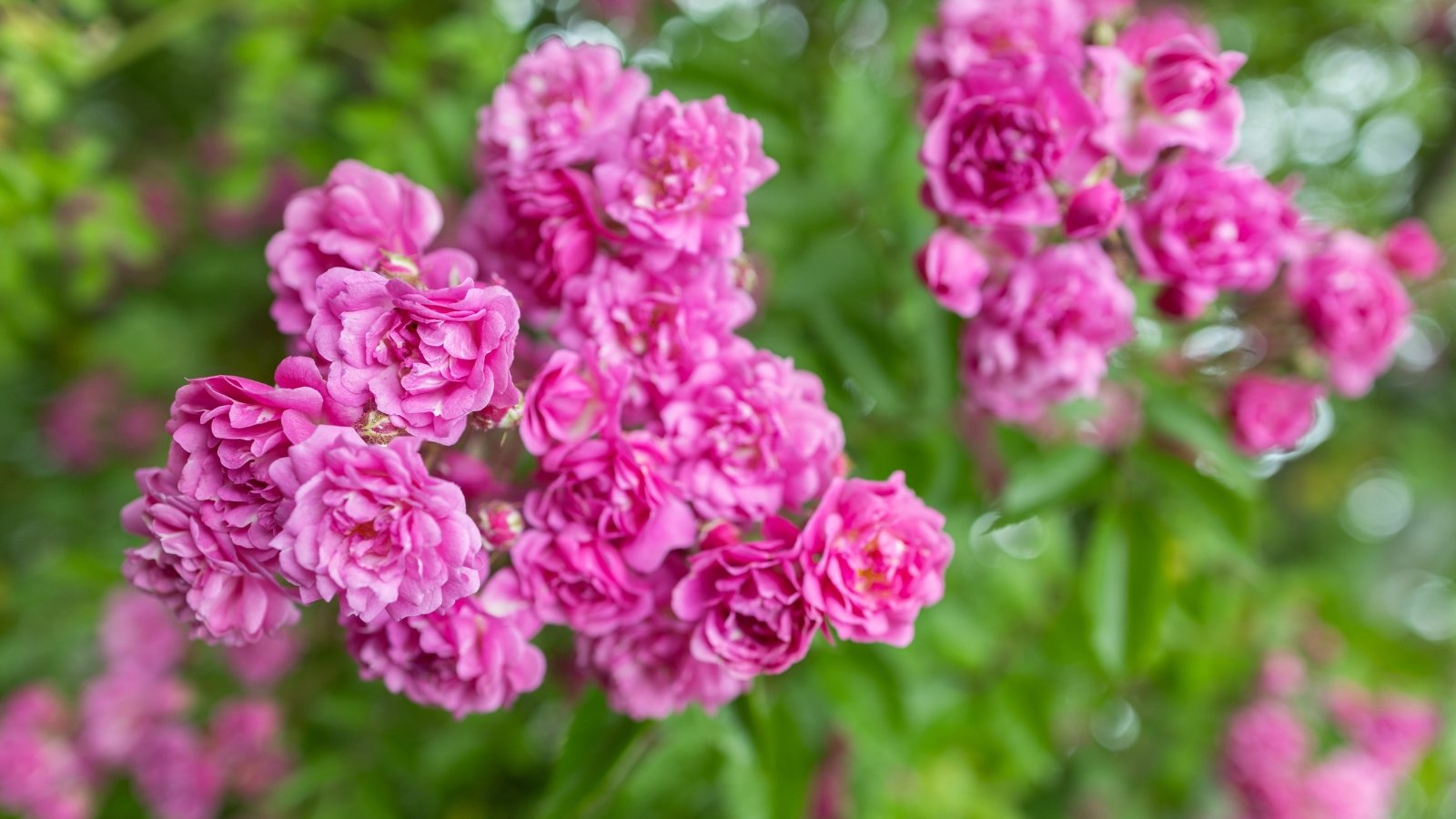
Polyantha, one of the floribunda parents, is smaller in stature and flower size. Prolific clusters cover the small shrubs throughout the growing season.
Miniatures are a form of hybrid tea or grandiflora and may be shorter and more compact. Groundcover types create a carpet of color on rugged, low-growing shrubs.
Each type is known for its low maintenance, disease resistance, and easy vigor. These have few problems in harsh winters, but their crowns and roots benefit from the hilling and mounding technique.
English
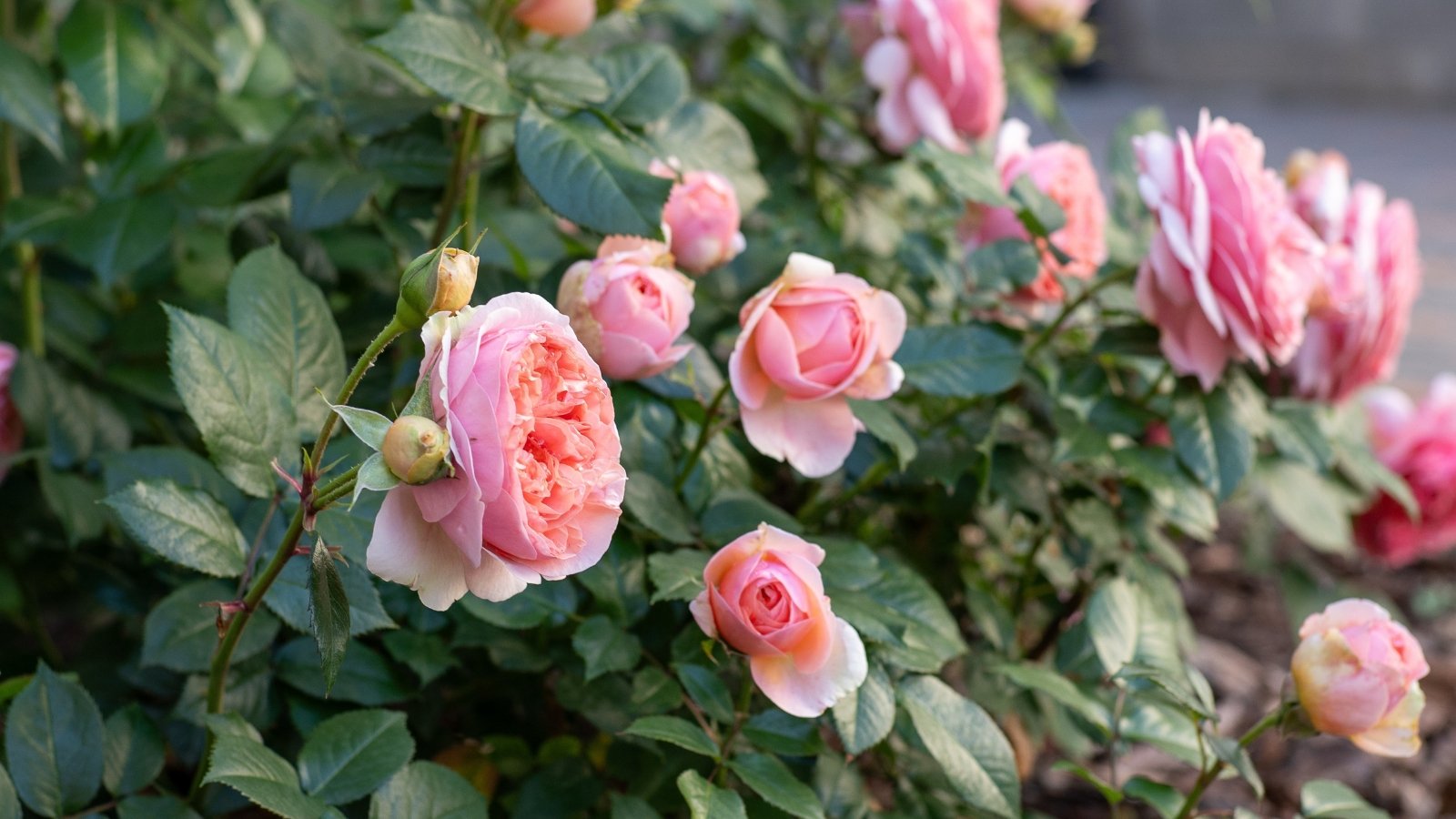
As with hybrid teas, gardeners in zones 4 and 5 may want to prune English roses to 18 to 24 inches after several nights with temperatures below 20°F (-7°C). Mound one foot of soil or mulch at the base, and use a wire cage with leaves as added insulation.
English hybrids have parentage in old garden roses, productive, vigorous, and reliable. They have the fully-petaled flowers and fragrance of the heirlooms with the continual blooming and colors of modern roses.
Some English varieties (also called David Austin roses for their renowned breeder) grow on their own root, while others are grafts. Either way, they benefit from extra winter protection in zones 4, 5, and 6.
Climbing
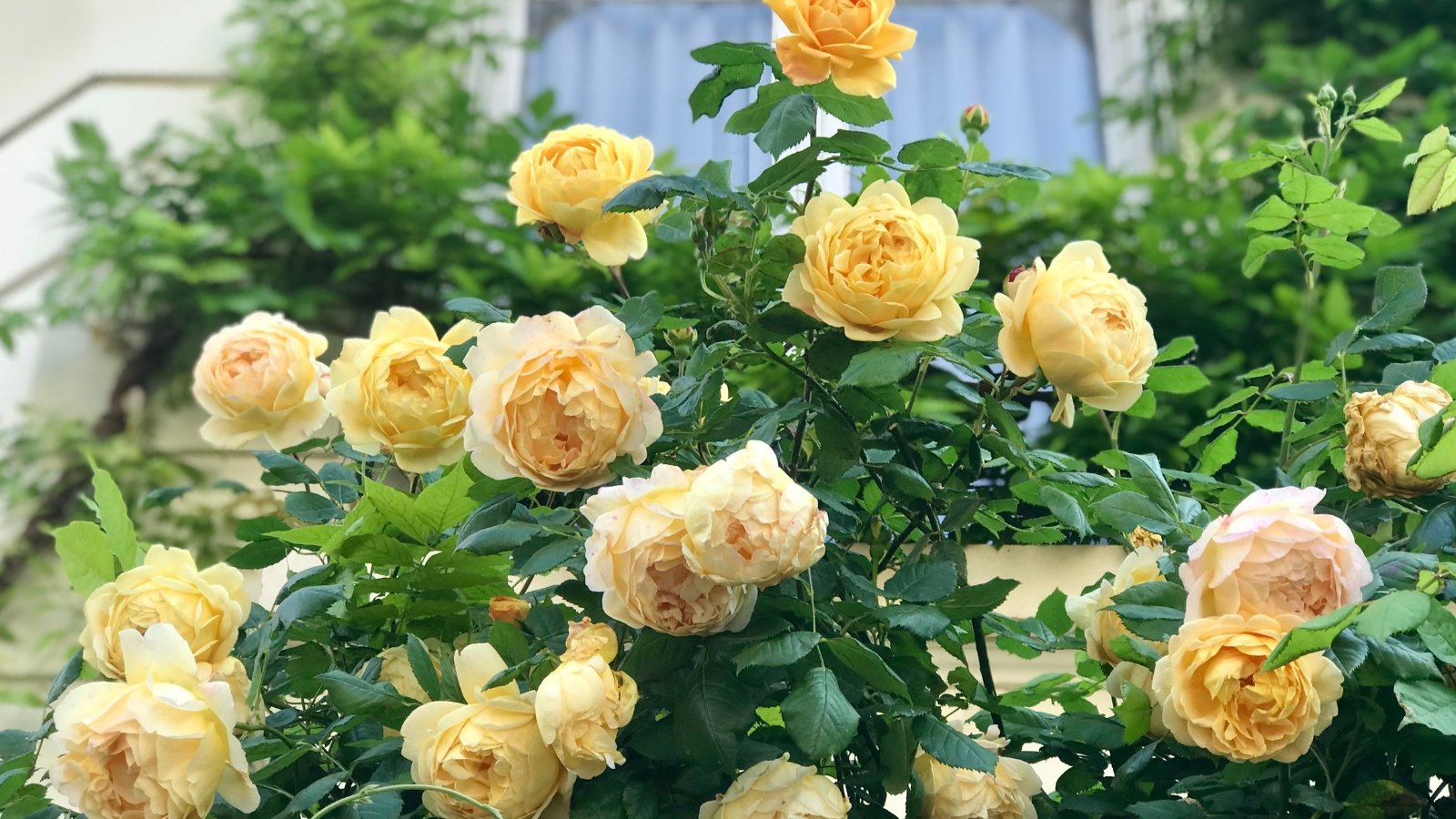
Climbing roses are another type that usually need winter protection. They are generally vigorous, sturdy roses with an easy-going nature and robust growth. In severe winters, winds and temperature changes may damage the canes.
There are two primary ways to overwinter climbers. The first is to secure the canes to their support structure, cutting off any long strays that may whip in the wind. Wrap the whole plant in burlap, frost cloth, or evergreen boughs and tie them with twine – mound one foot of soil or mulch at the crown.
The second technique is for really cold climates and requires more heavy lifting. Remove the canes from the structure and tie them together loosely. Bend them to ground level and pin down the stems to hold them in place. Cover the canes with six inches of soil for insulation. Uncover and re-secure the stems to their supports as temperatures warm in spring.
Containers
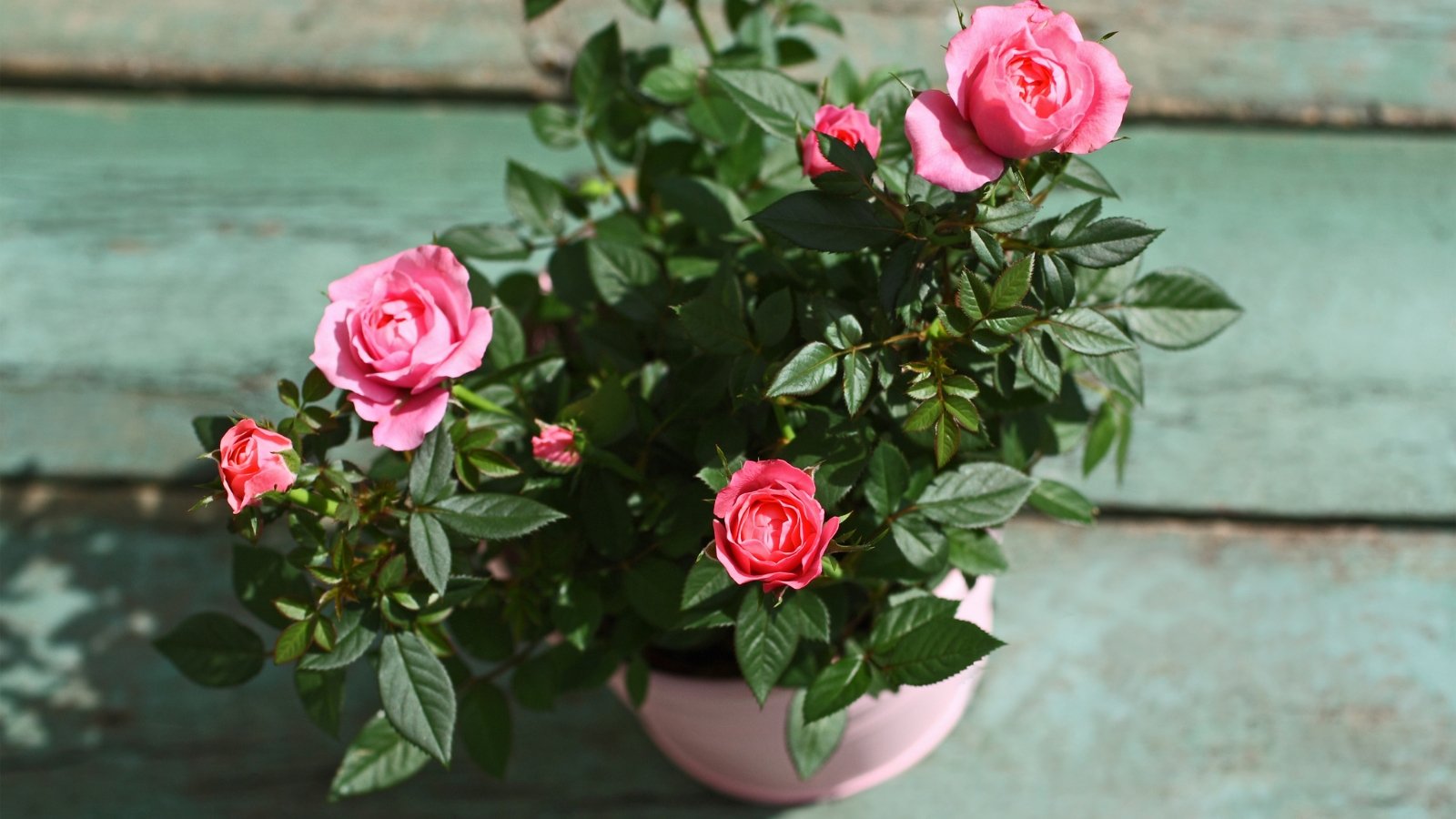
Container plants lack the benefit of surrounding soil mass, which provides insulation. Because of their above-ground siting, only a thin wall protects roots from surrounding air temperatures. The soil is susceptible to frost heaving, leading to root disturbance and damage.
Opt for a variety one to two zones hardier than your growing zone. And use a large container. A large pot houses more soil volume and root mass and has the best chance of overwintering.
In mild climates, insulate with a thermal blanket or burlap cover during cold snaps and windy spells. In colder climates, more protection may be necessary to ward off damage.
Shelter
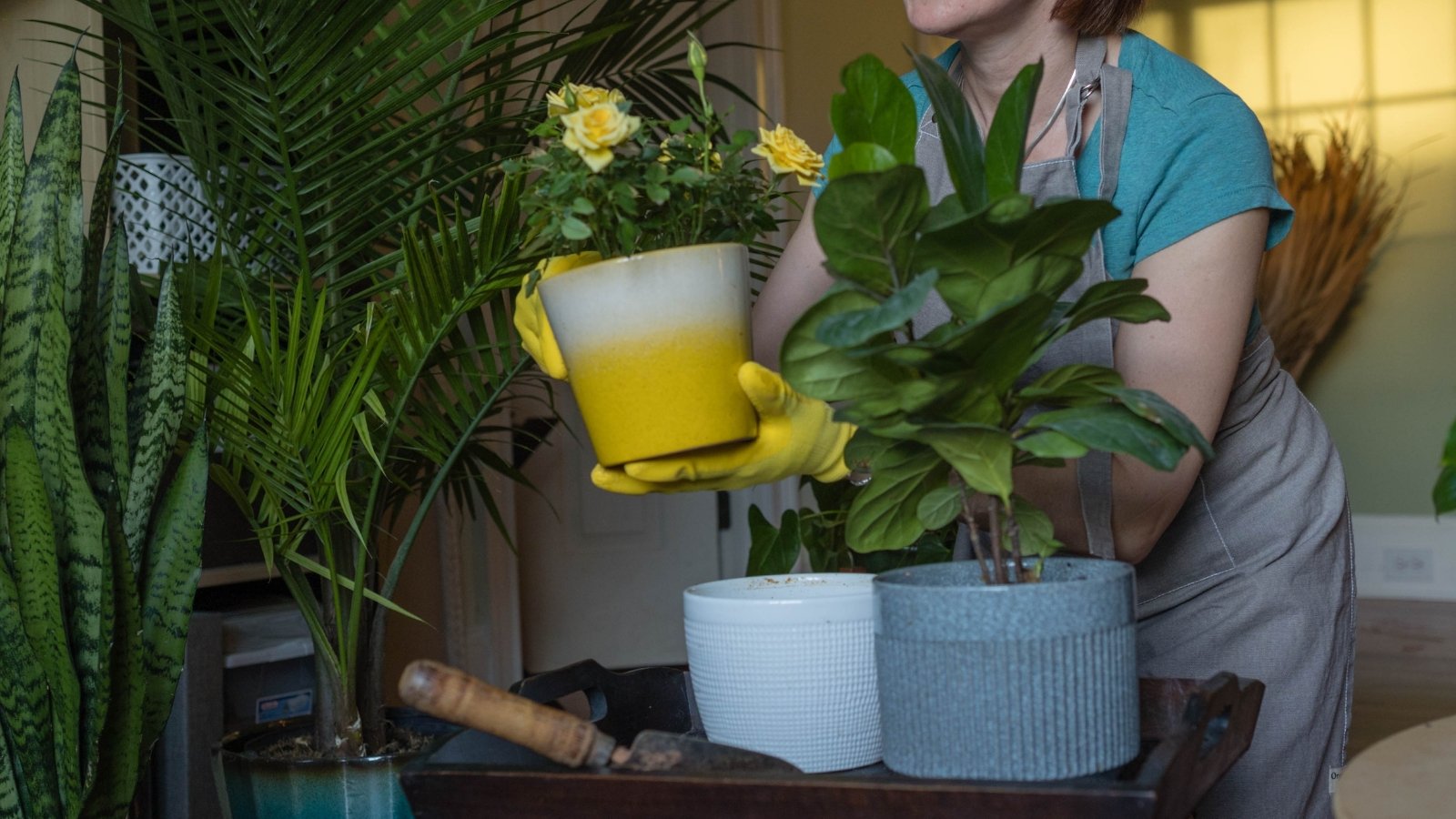
Bring the potted bloomers into an unheated space like a garage, basement, shed, or cold frame when possible. An enclosed space offers the best protection against the elements and the best chance of survival.
Plants benefit from a little natural light in these spaces and require occasional watering, as they lack natural moisture from rain or snow. The ideal indoor temperature range is between 30-40°F (-1-7°C).
Dig

Dig a large enough hole to house the entire pot, and situate it so the rim is just above the soil line. Return the surrounding soil to bury the pot. This technique mimics in-ground planting and provides the warming soil mass that above-ground containers lack.
Add a generous layer of mulch around the top of the pot for added protection, or use the wire cage and leaf-fill method as upper coverage.
Wrap
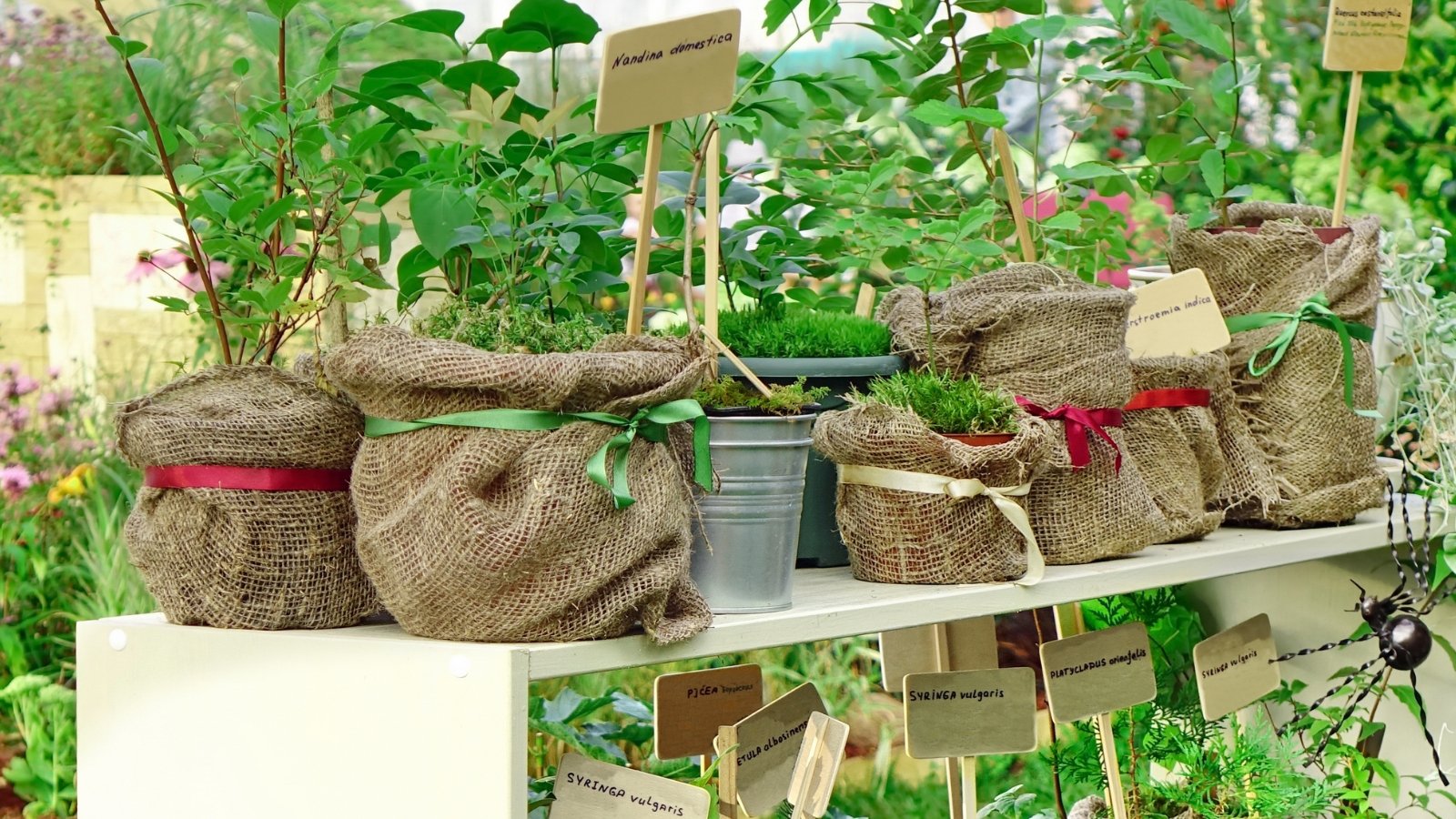
Give tender roses winter protection by wrapping the containers and exposed plant parts in frost cloth, fleece, thermal, or frost blankets. Some gardeners wrap their pots in layers of plastic bubble wrap (at least three layers thick), insulating foam, or burlap for the season.
Trench

Trenching is another technique for larger shrubs like roses, where the whole pot and plant are turned on their side, placed in a trench, and covered. This full coverage insulates both the branches and containerized roots.
Tree Standards
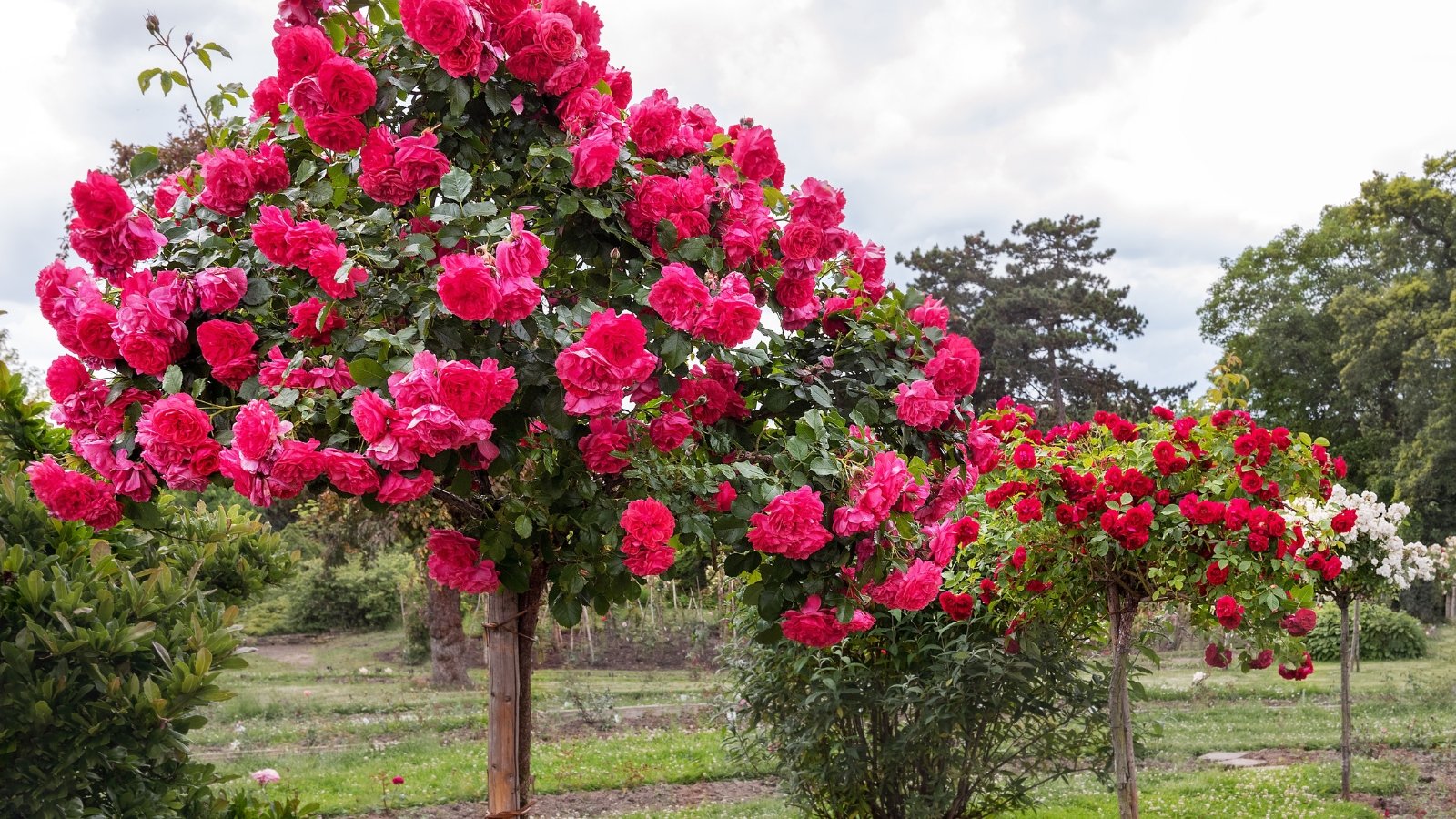
Tree roses are moderns like hybrid teas, floribundas, and grandifloras grafted to a tall stem for a leafy, floriferous canopy. The sensitive graft union is high on the stem and warrants protection when temperatures fall below 10°F (-12°C).
To protect the specimens, mound the base. Wrap the upper growth and stem in burlap or thermal cloth.
For more extensive measures, opt for the bending and trenching method. Tie upper branching. Loosen the soil around the roots, dig one side to create a trench, and expose the roots. Tip the standard into the trench. Be sure to tip the entire root ball to avoid bending or damaging the stem.




